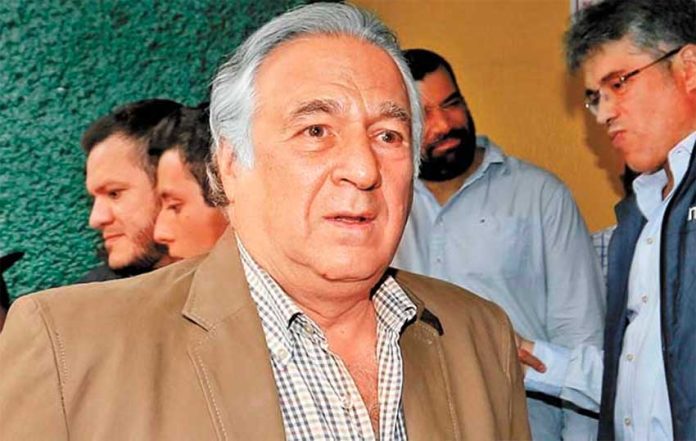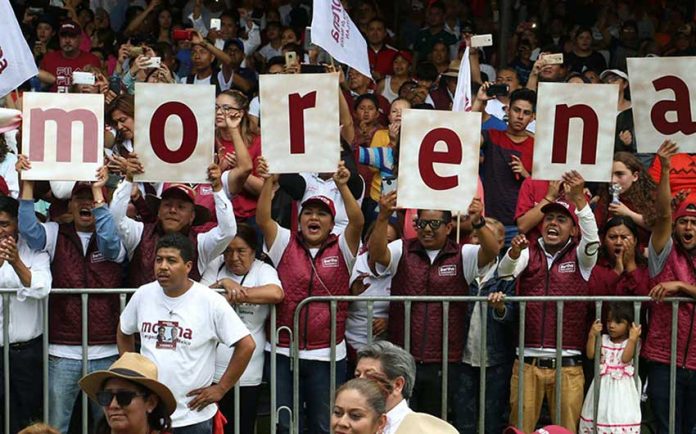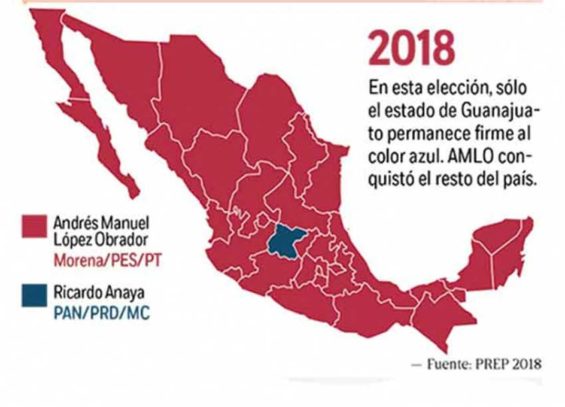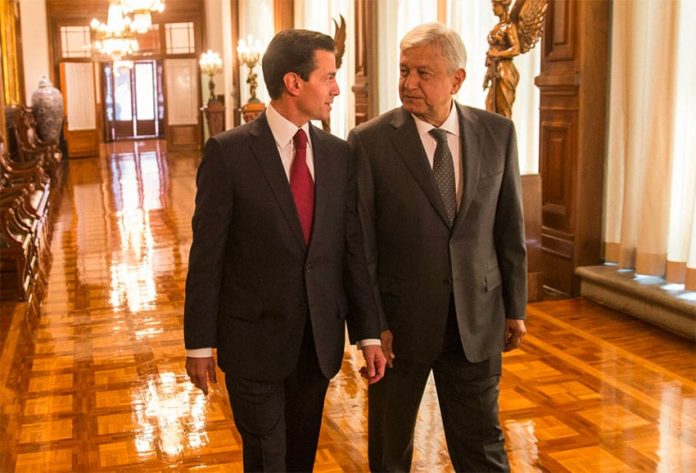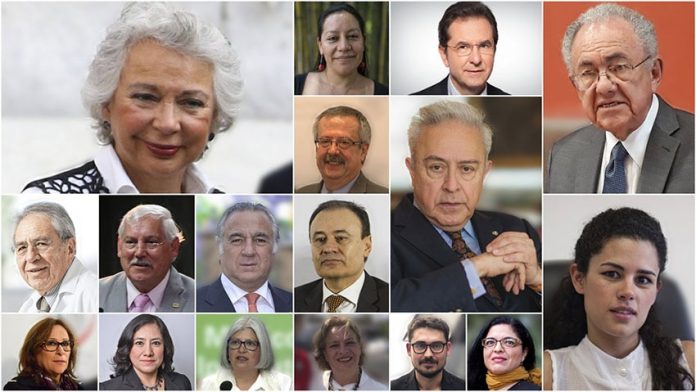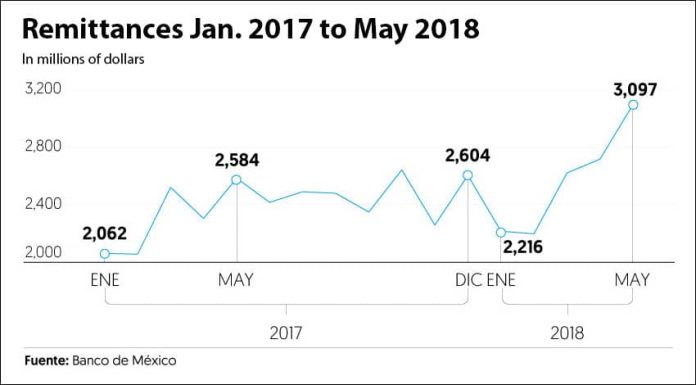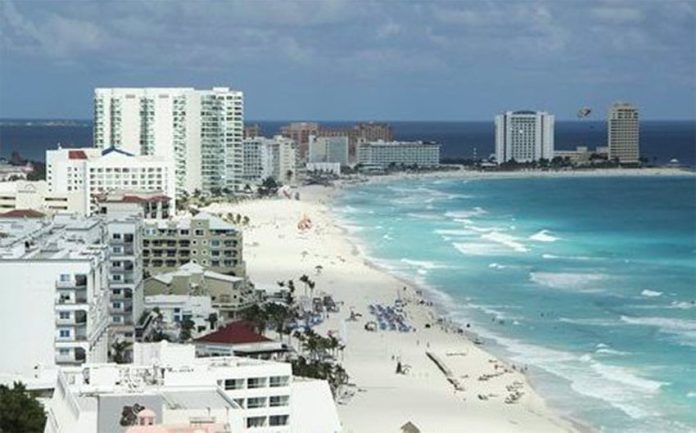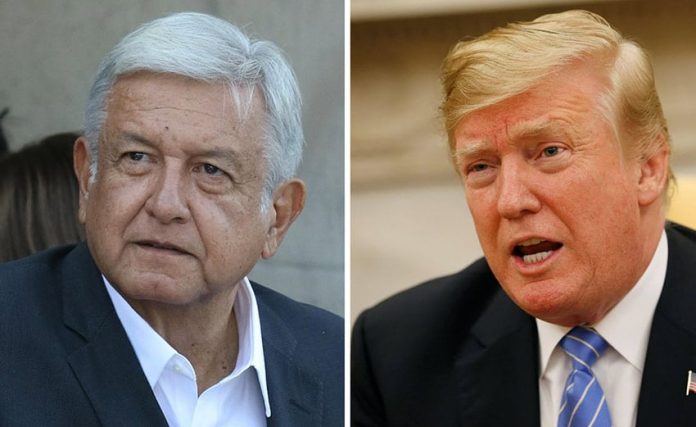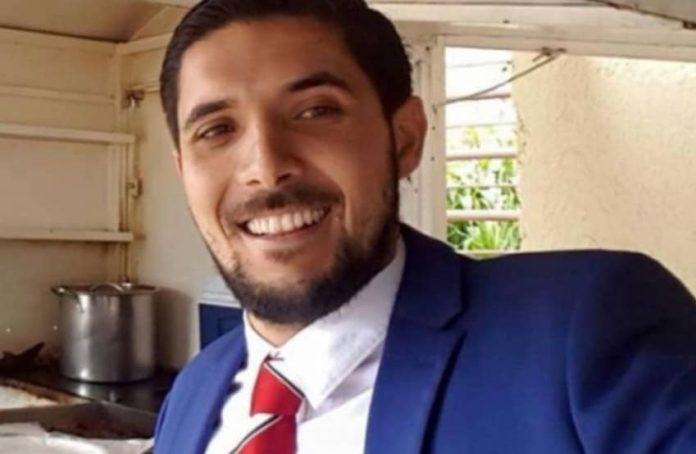Long before he won Sunday’s presidential election in a landslide, Andrés Manuel López Obrador took the unusual step of naming the would-be members of his cabinet should he become the next president of Mexico.
With that being a reality now, here is a look at the backgrounds of the cabinet secretaries who will be charged with helping López Obrador, or AMLO, to implement his political agenda.
The 16-member cabinet, which AMLO announced in December, features an equal number of men and women, many of whom have had previous careers in academia and studied abroad.
Secretary of the Interior:
For the position usually considered the second-most powerful in Mexico’s federal government, López Obrador’s pick is 71-year-old Olga María del Carmen Sánchez Cordero Dávila.
Sánchez is a former Supreme Court judge who has seven honorary doctorates. She will be the first woman to hold the interior secretary role.
During the five-month transition period, Sánchez and AMLO’s campaign manager, Tania Clouthier, will manage the new administration’s internal political affairs.
Foreign Affairs:
The new government’s chief diplomat will be Héctor Vasconcelos, son of renowned former secretary of education José Vasconcelos.
The former political science professor has a doctorate from Oxford University and previously served as Mexico’s ambassador to Denmark, Norway and Iceland and consul general in Boston, Massachusetts.
Along with former Mexico City mayor Marcelo Ebrard, Vasconcelos will head up AMLO’s foreign affairs team in the transition period.
At a time of strained relations with the United States, his role in the new administration will be pivotal.
Economy:
Graciela Márquez Colín, an academic with a history doctorate from Harvard, will be Mexico’s next economy secretary.
The former visiting professor to the University of Chicago has authored articles about trade policy and economic development during her long academic career.
She will replace outgoing Economy Secretary Ildefonso Guajardo, who has been Mexico’s chief negotiator in the talks to reach an updated North American Free Trade Agreement (NAFTA).
Finance:
Set to be Mexico’s next finance secretary is Carlos Manuel Urzúa Macías.
Urzúa previously served in the same position in the Mexico City government and has a doctorate in economics from the University of Wisconsin.
He has also acted as a consultant on several occasions to the World Bank and is the founding director of the Graduate School of Public Administration at the Mexico City campus of Tec. de Monterrey.
Energy:
Norma Rocío Nahle García, a petrochemical engineer by profession, is López Obrador’s pick to head up the energy secretariat.
The portfolio will take on extra significance given that the Morena party leader has committed to reviewing contracts awarded to foreign and private companies in the sector.
Nahle is currently a federal deputy for Morena representing Veracruz and is the party’s leader in Congress.
Agriculture:
AMLO has committed to keeping the best interests of the nation’s farmers at heart and to make that promise a reality he has chosen Víctor Villalobos to be his agriculture secretary.
Villalobos is a director of the Inter-American Institute for Cooperation on Agriculture and has a doctorate from the University of Alberta in Canada.
He has previously served as an undersecretary in both the agriculture and environment secretariats.
Labor and Social Welfare:
Luisa María Alcalde Luján, who has a law degree from Mexico’s largest and most prestigious university, UNAM, is AMLO’s pick in this key secretariat.
Alcalde was a federal deputy between 2012 and 2015 and also worked as a research assistant at her alma mater.
She is currently a professor of law and has published several articles advocating for higher wages in Mexico.
At 30 years of age, Alcalde Luján will be the youngest member of López Obrador’s cabinet.
Education:
Esteban Moctezuma Barragán will become Mexico’s next education secretary.
López Obrador has pledged to restore cordial relations with the nation’s teachers after years of protests against the current administration’s education reform, which forced teachers to undergo compulsory evaluations.
Moctezuma, who has a masters in political economy from Cambridge University, will be tasked with developing a new plan that both protects teachers’ labor rights and improves educational standards.
He is a former member of the Institutional Revolutionary Party (PRI) and served as secretary of the interior and secretary of social development during the presidency of Ernesto Zedillo from 1994 to 2000.
Culture:
The current general director of the Guerrero Institute of Culture, Alejandra Frausto Guerrero, will step into a federal role in the same area in AMLO’s administration.
Frausto holds a law degree from UNAM and previously served as a cultural director at the Claustro de Sor Juana University in Mexico City.
Communications and Transportation:
Former Pemex deputy director Javier Jiménez Espriú will take on the role of secretary of communications and transportation.
Jiménez has previously headed up the Faculty of Engineering at UNAM and was a professor at the university for more than 30 years.
He has also made significant contributions to Mexico’s cultural life by founding a music school, a symphony orchestra and the international book fair at Mexico City’s Palace of Mining.
Jiménez is also a board member of the Mexican Institute of Petroleum.
Environment and Natural Resources:
Josefa González Blanco Ortiz Mena is AMLO’s pick to head up the environmental secretariat.
Blanco holds a law degree from Anahuac University and has previously worked on conservation projects in Chiapas.
Among her experiences is helping to reintroduce endangered species back into the wild.
Tourism:
The former chancellor of Mexico City’s University of Tourism and Administrative Sciences, Miguel Torruco Marqués, will become the new federal tourism secretary.
Tourism is a key driver of Mexico’s economy, meaning that Torruco will have a key role in López Obrador’s administration.
He previously served as tourism secretary in Mexico City during the administration of former mayor Miguel Ángel Mancera.
Public Administration:
Irma Eréndira Sandoval Ballesteros, a UNAM researcher with a doctorate in political science from the University of California, will become the next secretary of public administration.
Health:
Overseeing Mexico’s public hospitals and health system will be Jorge Alcocer Varela, who has a doctorate in medical science from UNAM.
Alcocer was formerly a researcher at the National Institute of Medical Sciences and Nutrition.
Social Development:
In an AMLO-led government that looks set to focus on investing heavily on social programs, this key position will be occupied by María Luisa Albores González.
An agronomist by profession, Albores has more than 10 years of experience working for an indigenous organization in the mountain regions of Puebla, where she has focused on the development of organic farming, ecotourism and education.
Agrarian Development:
Román Guillermo Meyer Falcón has been designated to fill the position of secretary of agrarian development.
Meyer is a qualified architect and has a masters in urban management. He has taught urbanism and urban development courses at the Ibero-American University.
López Obrador and his cabinet will be sworn in on December 1.
The president-elect has also said that the chief of his office will be Alfonso Romo, who acted as a link between López Obrador and the private sector during the presidential campaign period.
Source: El Financiero (sp)
